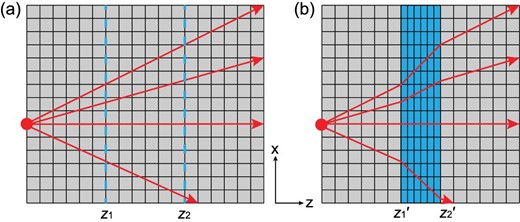SECTION 1. IDENTIFICATION
Product Name: Aluminum Cobalt Sputtering Target
Product Number: All applicable American Elements product codes, e.g. AL-CO-02-ST
, AL-CO-025-ST
, AL-CO-03-ST
, AL-CO-035-ST
, AL-CO-04-ST
, AL-CO-05-ST
CAS #: 11114-55-9
Relevant identified uses of the substance: Scientific research and development
Supplier details:
American Elements
10884 Weyburn Ave.
Los Angeles, CA 90024
Tel: +1 310-208-0551
Fax: +1 310-208-0351
Emergency telephone number:
Domestic, North America: +1 800-424-9300
International: +1 703-527-3887
SECTION 2. HAZARDS IDENTIFICATION
Classification of the substance or mixture
Classification according to Regulation (EC) No 1272/2008
The substance is not classified as hazardous to health or the environment according to the CLP regulation.
Classification according to Directive 67/548/EEC or Directive 1999/45/EC
Not applicable
Information concerning particular hazards for human and environment:
No information known.
Hazards not otherwise classified
No information known.
Label elements
Labelling according to Regulation (EC) No 1272/2008
Not applicable
Hazard pictograms
Not applicable
Signal word
Not applicable
Hazard statements
Not applicable
WHMIS classification
Not controlled
Classification system
HMIS ratings (scale 0-4)
(Hazardous Materials Identification System)
Health (acute effects) = 0
Flammability = 0
Physical Hazard = 0
Other hazards
Results of PBT and vPvB assessment
PBT: Not applicable.
vPvB: Not applicable.
SECTION 3. COMPOSITION/INFORMATION ON INGREDIENTS
Chemical characterization: Substances
CAS# Description:
7440-48-4 Cobalt
Identification number(s):
EC number: 231-158-0
7429-90-5 Aluminum
Identification number(s):
EC number: 231-072-3
SECTION 4. FIRST AID MEASURES
Description of first aid measures
General information
No special measures required.
After inhalation
Seek medical treatment in case of complaints.
After skin contact
Generally the product does not irritate the skin.
After eye contact
Rinse opened eye for several minutes under running water. If symptoms persist, consult a doctor.
After swallowing
If symptoms persist consult doctor.
Information for doctor
Most important symptoms and effects, both acute and delayed
No further relevant information available.
Indication of any immediate medical attention and special treatment needed
No further relevant information available.
SECTION 5. FIREFIGHTING MEASURES
Extinguishing media
Suitable extinguishing agents
Special powder for metal fires. Do not use water.
For safety reasons unsuitable extinguishing agents
Water
Special hazards arising from the substance or mixture
If this product is involved in a fire, the following can be released:
Copper oxides
Advice for firefighters
Protective equipment:
No special measures required.
SECTION 6. ACCIDENTAL RELEASE MEASURES
Personal precautions, protective equipment and emergency procedures
Not required.
Environmental precautions:
Do not allow material to be released to the environment without proper governmental permits.
Do not allow product to reach sewage system or any water course.
Do not allow to penetrate the ground/soil.
Methods and material for containment and cleaning up:
Pick up mechanically.
Prevention of secondary hazards:
No special measures required.
Reference to other sections
See Section 7 for information on safe handling
See Section 8 for information on personal protection equipment.
See Section 13 for disposal information.
SECTION 7. HANDLING AND STORAGE
Handling
Precautions for safe handling
Keep container tightly sealed.
Store in cool, dry place in tightly closed containers.
Information about protection against explosions and fires:
No special measures required.
Conditions for safe storage, including any incompatibilities
Storage
Requirements to be met by storerooms and receptacles:
No special requirements.
Information about storage in one common storage facility:
No information known.
Further information about storage conditions:
Keep container tightly sealed.
Store in cool, dry conditions in well sealed containers.
Specific end use(s)
No further relevant information available.
SECTION 8. EXPOSURE CONTROLS/PERSONAL PROTECTION
Exposure controls
Personal protective equipment
General protective and hygienic measures
The usual precautionary measures for handling chemicals should be followed.
Maintain an ergonomically appropriate working environment.
Breathing equipment: Not required.
Protection of hands: Not required.
Penetration time of glove material (in minutes)
Not determined
Eye protection: Safety glasses
Body protection: Protective work clothing.
SECTION 9. PHYSICAL AND CHEMICAL PROPERTIES
Information on basic physical and chemical properties
General Information
Appearance:
Form: Solid in various forms
Odor: Odorless
Odor threshold: Not determined.
pH-value: Not applicable.
Change in condition
Melting point/Melting range: Not determined.
Boiling point/Boiling range: Not determined.
Sublimation temperature / start: Not determined
Flammability (solid, gaseous): Not determined.
Ignition temperature: Not determined
Decomposition temperature: Not determined
Auto igniting: Not determined.
Danger of explosion: Not determined.
Explosion limits:
Lower: Not determined
Upper: Not determined
Relative density: Not determined.
Vapor density: Not applicable.
Evaporation rate: Not applicable.
Solubility in / Miscibility with Water: Insoluble
Partition coefficient (n-octanol/water): Not determined.
Viscosity:
dynamic: Not applicable.
kinematic: Not applicable.
Other information
No further relevant information available
SECTION 10. STABILITY AND REACTIVITY
Reactivity
No information known.
Chemical stability
Stable under recommended storage conditions
Thermal decomposition / conditions to be avoided:
Decomposition will not occur if used and stored according to specifications.
Possibility of hazardous reactions
No dangerous reactions known
Conditions to avoid
No further relevant information available.
Incompatible materials:
No information known.
Hazardous decomposition products:
Copper oxides
Metal oxide fume
SECTION 11. TOXICOLOGICAL INFORMATION
Information on toxicological effects
Acute toxicity:
The Registry of Toxic Effects of Chemical Substances (RTECS) contains acute toxicity data for this substance.
LD/LC50 values that are relevant for classification:
Oral LD50 >5000 mg/kg (mouse)
Skin irritation or corrosion: No irritant effect.
Eye irritation or corrosion: No irritant effect.
Sensitization: No sensitizing effects known.
Germ cell mutagenicity: No effects known.
Carcinogenicity:
EPA-D: Not classifiable as to human carcinogenicity: inadequate human and animal evidence of carcinogenicity or no data are available.
The Registry of Toxic Effects of Chemical Substances (RTECS) contains tumorigenic and/or carc inogenic and/or neoplastic data for this substance.
Reproductive toxicity:
The Registry of Toxic Effects of Chemical Substances (RTECS) contains reproductive data for this substance.
Specific target organ system toxicity - repeated exposure: No effects known.
Specific target organ system toxicity - single exposure: No effects known.
Aspiration hazard: No effects known.
Subacute to chronic toxicity: No effects known.
Additional toxicological information:
To the best of our knowledge the acute and chronic toxicity of this substance is not fully known.
Carcinogenic categories
OSHA-Ca (Occupational Safety & Health Administration)
Substance is not listed.
SECTION 12. ECOLOGICAL INFORMATION
Toxicity
Aquatic toxicity:
No further relevant information available.
Persistence and degradability
No further relevant information available.
Bioaccumulative potential
No further relevant information available.
Mobility in soil
No further relevant information available.
Additional ecological information:
General notes:
Do not allow material to be released to the environment without proper governmental permits.
Do not allow undiluted product or large quantities to reach ground water, water course or sewage system.
Avoid transfer into the environment.
Results of PBT and vPvB assessment
PBT: Not applicable.
vPvB: Not applicable.
Other adverse effects
No further relevant information available.
SECTION 13. DISPOSAL CONSIDERATIONS
Waste treatment methods
Recommendation
Consult state, local or national regulations to ensure proper disposal.
Uncleaned packagings:
Recommendation:
Disposal must be made according to official regulations.
SECTION 14. TRANSPORT INFORMATION
UN-Number
DOT, ADN, IMDG, IATA
Not applicable
UN proper shipping name
DOT, ADN, IMDG, IATA
Not applicable
Transport hazard class(es)
DOT, ADR, ADN, IMDG, IATA
Class
Not applicable
Packing group
DOT, IMDG, IATA
Not applicable
Environmental hazards:
Marine pollutant (IMDG):
Yes (PP)
Yes (P)
Special precautions for user
Not applicable.
Transport in bulk according to Annex II of MARPOL73/78 and the IBC Code
Not applicable.
Transport/Additional information:
DOT
Marine Pollutant (DOT):
No
UN "Model Regulation":
-
SECTION 15. REGULATORY INFORMATION
National regulations
All components of this product are listed in the U.S. Environmental Protection Agency Toxic Substances Control Act Chemical substance Inventory.
All components of this product are listed on the Canadian Domestic Substances List (DSL).
SARA Section 313 (specific toxic chemical listings)
Substance is not listed.
California Proposition 65
Prop 65 - Chemicals known to cause cancer
Substance is not listed.
Prop 65 - Developmental toxicity
Substance is not listed.
Prop 65 - Developmental toxicity, female
Substance is not listed.
Prop 65 - Developmental toxicity, male
Substance is not listed.
Information about limitation of use:
For use only by technically qualified individuals.
Other regulations, limitations and prohibitive regulations
Substance of Very High Concern (SVHC) according to the REACH Regulations (EC) No. 1907/2006.
Substance is not listed.
The conditions of restrictions according to Article 67 and Annex XVII of the Regulation (EC) No 1907/2006 (REACH) for the manufacturing, placing on the market and use must be observed.
Substance is not listed.
Annex XIV of the REACH Regulations (requiring Authorisation for use)
Substance is not listed.
Chemical safety assessment:
A Chemical Safety Assessment has not been carried out.
SECTION 16. OTHER INFORMATION
Safety Data Sheet according to Regulation (EC) No. 1907/2006 (REACH). The above information is believed to be correct but does not purport to be all inclusive and shall be used only as a guide. The information in this document is based on the present state of our knowledge and is applicable to the product with regard to appropriate safety precautions. It does not represent any guarantee of the properties of the product. American Elements shall not be held liable for any damage resulting from handling or from contact with the above product. See reverse side of invoice or packing slip for additional terms and conditions of sale. COPYRIGHT 1997-2022 AMERICAN ELEMENTS. LICENSED GRANTED TO MAKE UNLIMITED PAPER COPIES FOR INTERNAL USE ONLY.
 Aluminum's name is derived from alumina, the mineral from which Sir Humphrey Davy attempted to refine it from in 1812. Aluminum was first predicted by Antoine Lavoisier 1787 and first isolated by Hans Christian Øersted in 1825. Aluminum is a silvery gray metal that possesses many desirable characteristics. It is light, nonmagnetic and non-sparking. It stands second among metals in the scale of malleability, and sixth in ductility. It is extensively used in many industrial applications where a strong, light, easily constructed material is needed.
Aluminum's name is derived from alumina, the mineral from which Sir Humphrey Davy attempted to refine it from in 1812. Aluminum was first predicted by Antoine Lavoisier 1787 and first isolated by Hans Christian Øersted in 1825. Aluminum is a silvery gray metal that possesses many desirable characteristics. It is light, nonmagnetic and non-sparking. It stands second among metals in the scale of malleability, and sixth in ductility. It is extensively used in many industrial applications where a strong, light, easily constructed material is needed.  Although it has only 60% of the electrical conductivity of copper, it is used in electrical transmission lines because of its light weight. Pure aluminum is soft and lacks strength, but alloyed with small amounts of copper, magnesium, silicon, manganese, or other elements, it imparts a variety of useful properties.
Although it has only 60% of the electrical conductivity of copper, it is used in electrical transmission lines because of its light weight. Pure aluminum is soft and lacks strength, but alloyed with small amounts of copper, magnesium, silicon, manganese, or other elements, it imparts a variety of useful properties.
 The number of electrons in each of cobalt's shells is 2, 8, 15, 2 and its electron configuration is [Ar]3d7 4s2. The cobalt atom has a radius of 125 pm and a Van der Waals radius of 192 pm. Cobalt was first discovered by George Brandt in 1732. In its elemental form, cobalt has a lustrous gray appearance. Cobalt is found in cobaltite, erythrite, glaucodot and skutterudite ores.
The number of electrons in each of cobalt's shells is 2, 8, 15, 2 and its electron configuration is [Ar]3d7 4s2. The cobalt atom has a radius of 125 pm and a Van der Waals radius of 192 pm. Cobalt was first discovered by George Brandt in 1732. In its elemental form, cobalt has a lustrous gray appearance. Cobalt is found in cobaltite, erythrite, glaucodot and skutterudite ores.  Cobalt produces brilliant blue pigments which have been used since ancient times to color paint and glass. Cobalt is a ferromagnetic metal and is used primarily in the production of
Cobalt produces brilliant blue pigments which have been used since ancient times to color paint and glass. Cobalt is a ferromagnetic metal and is used primarily in the production of 
